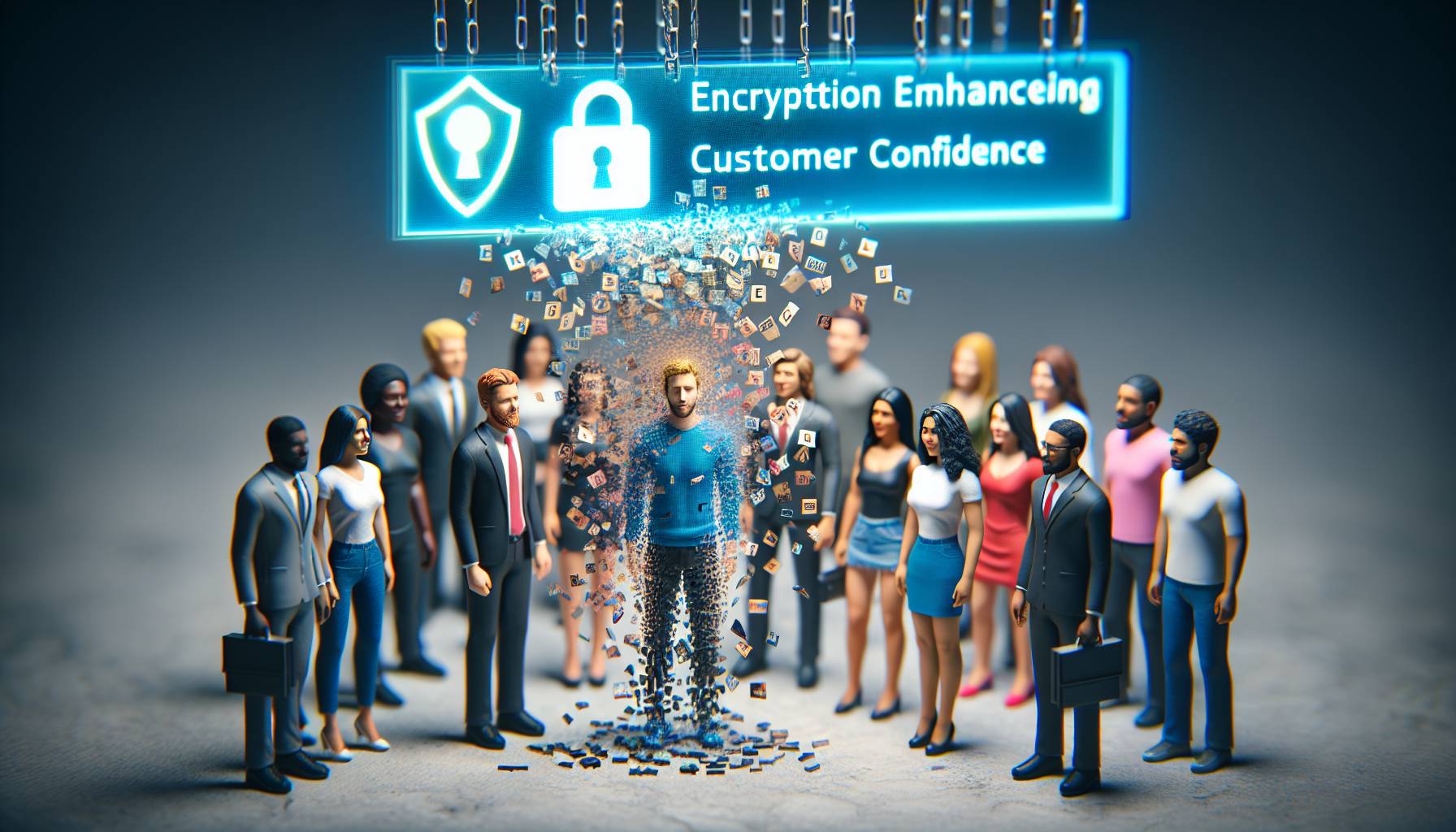Understanding Customer Concerns: The Importance of Trust

Sometimes, it takes only one negative review to make customers question a brand’s credibility. In fact, these days, with so many options available to customers, the smallest signs of mistrust can drive people away from your website. I noticed this after reading a few online reviews of brands that I liked. They didn’t say anything too outrageous, but there was always a customer who had experienced a miscommunication or payment issue.
That brought to mind how important trust is for customers - especially in e-commerce. Trust is crucial for any business or brand - that much is obvious. But on the internet, establishing credibility is even more important.
Because when you run an online store, your brand should be ready to reassure customers of their safety at every stage of their purchase journey. As security concerns keep increasing among online buyers, businesses must take more measures to improve the effectiveness and efficiency of their cybersecurity efforts. Now, it isn’t just about having a secure website with end-to-end encryption or privacy policies to protect user data. A business’ digital trustworthiness goes beyond the basic privacy policy or consent form.
If you want your customers to return for another purchase or recommend your brand to friends and family, you have to show them that you care about protecting them. At the heart of digital trust lies communication. You can have all the right security features on your website but if you aren’t communicating the message right, it is all for nothing. There are several ways in which businesses can build their digital trust with customers but here are four ways you can get started - implement SSL certificates, add Two-Factor Authentication (2FA), display third-party trust badges and integrate chatbots for live support.
Essential Security Features for Modern Businesses

We all know how much data matters these days - and how easy it is to lose it. So, it only makes sense that any customer you’re trying to woo, or business you want to work with is going to want to know if your website can keep up. Brings To Mind at the end of the day, it’s about protecting what’s important, but it’s also about ensuring convenience.
People want safety but they don’t want to have to go through a whole song and dance with a security guard before they walk into their favourite store. SSL certificates might be something you’ve heard before - especially if you use Chrome and get that ‘unsecure’ warning when your site doesn’t have one. But let me just say this - they’re absolutely crucial. They offer a lot of little benefits like offering credibility and giving you better SEO scores, but their main purpose is encrypting any communication between customers and your website.
No snoopers can see what gets sent from one end or the other so there’s no risk in giving away login credentials. It seems like another thing i think most people overlook is permissions management - and maybe because it sounds fancy but really isn’t. Having defined permissions makes sure employees only have access to what they need for work which reduces the chances of an accidental slip up that makes your system vulnerable. It also gives people a sense of security because they know exactly who has access where.
I don’t know how much simpler I can make this, but using something as basic as strong password rules can make all the difference. It goes without saying that multi-factor authentication ups security too - even though everyone groans about having to do extra steps for logins. Backups seem like something that aren’t necessary until they’re actually needed so please look into regular scheduled backups.
How Encryption Enhances Customer Confidence

How Encryption Enhances Customer Confidence Have you ever typed your credit card number into a site and paused, wondering where those digits might end up. We have all been there. Encrypting that very information is how trusted sites help set our worries at ease. But what does that mean, really.
Encryption is scrambling information so only the intended reader can piece it back together. The everyday way we notice is evidently a padlock on an internet browser’s address bar. That’s Secure Sockets Layer, or SSL, in action. Businesses who encrypt are sending a message - ‘we care about keeping your details safe’.
The more robust their encryption, the stronger that message becomes. This isn’t only about keeping out hackers, although that’s vital - I mean, it’s also about letting your users know you are on their side.
You’re willing to do the work to keep their money and personal data protected. What seems like a small effort can seriously impact customer confidence. The way I see it, it might sound like a lot of tech talk, but customers won’t need to be it experts to notice when good encryption is pretty much present. This security feature will help them feel relaxed and ready to spend with your business again and again.
And you can rest easy knowing they’re happy to see you as someone they can trust.
The Role of Two-Factor Authentication in Securing Accounts

You’re sprawled on the lounge, scrolling through emails, and there it is: “Someone tried to sign in to your account from an unknown device. ” Your heart leaps. Another one: “Was this you.
” You scan the message, barely breathing. It’s happened to all of us, hasn’t it.
The sense that someone, somewhere, is allegedly trying their luck with your password. The way I see it, it can make you feel like your life is an open house. That’s where two-factor authentication steps in.
It’s the digital equivalent of deadbolting your front door and then setting a rather large dog loose in the garden. Two-factor authentication isn’t some mysterious tech wizardry. It’s a fairly straightforward process where, after entering your password, you need to provide another piece of information to get in. Usually a code sent via text or email or sometimes even a fingerprint or face scan.
I’ll admit I used to find it tedious—an extra step when I was already late for a meeting or eager to check that latest sale on sneakers. But here’s what I’ve learned: customers expect this now. For them, it’s not about inconvenience but about feeling secure.
Like when you see those little padlocks on a website, 2FA has become synonymous with trust. The thing is, people want control over their security settings these days. They’re fine with jumping through an extra hoop if it means their accounts are safer from hackers and scammers.
It sends a message: we care about you and we want your experience here to be a safe one. And because passwords alone are not enough—let’s face it, most of us are guilty of reusing the same ones everywhere—it feels good knowing there’s another layer keeping your data under wraps. Having 2FA as part of your customer login process isn’t just about protecting business interests; it’s about showing users that you value their safety as much as they do themselves. More or less.
It might mean dealing with a few extra support tickets at first or helping people reset things when they lose their phones but customers will thank you for it in the end—either through loyalty or simply by coming back again and again because they trust you more than the competition who didn’t bother with the extra step.
Transparency and Data Protection: Building Trust Through Communication

I’ve seen the look on people’s faces when they get that dreaded ‘your data has been compromised’ email. Implies That it’s a mix of shock and anger. Something like you’d feel if your best friend had been sleeping with your husband. You trust the person who has your most intimate data.
When they do the dirty, you just can’t believe it. Sort of. The time for stonewalling is over – you have to be transparent about what happened and what steps are being taken to fix it.
Clearly informing customers about how their personal information is collected, used, and stored is a non-negotiable requirement in modern business. People want more than assurance - they want proof that their data is protected. Or at least knowledge that it isn’t.
The key to trust is communication – people need to know what steps are being taken to ensure their security. Sort of. Establishing clear communication channels for customers to ask questions or seek support regarding privacy matters further demonstrates a company’s commitment to transparency and customer-centricity.
It shows customers that their concerns matter and that the company values their input in shaping privacy practices. People need education around security. It’s a subject that most don’t know much about other than being worried about it but putting it off for another day (a bit like a pap smear). Brands must empower users through educational resources, such as guides, FAQs, or tutorials on security best practices and phishing scams, which not only equips customers with valuable knowledge but also positions the company as a trusted advisor in navigating online risks and cyber attacks.
By fostering an open dialogue around data protection, businesses demonstrate their dedication to prioritising customer privacy and safety while building stronger relationships based on trust and accountability.
Future Trends in Security Features: What Customers Will Expect Next

Standing in a queue at the petrol station waiting to pay for a couple litres of petrol, it’s interesting to observe how often customers pay for something with their phone. While some use their debit or credit card, more and more people are using something even more convenient. There are fewer stories about lost wallets because now it’s all on our phones. With customers generally placing so much faith in their digital accessories and their personal safety, businesses cannot afford to lag behind.
A key part of creating trust is allowing customers to feel as secure with your products and services as they do with their own smartphones. Just like that smartphone that can fairly identify a fingerprint and recognise a face, most people expect to be able to access everything they need from anywhere they want. Unless your customer has specifically chosen offline engagement, there is very little reason to assume that they will not want access from a device of their choice.
While security features are critical in this sort of scenario, it is also important that your website or app can easily be used across devices and platforms. The world is changing rapidly. And perhaps the most important thing you could offer your customer at this point is integrity.
And transparency. So allow them to verify any piece of information that they choose to. It is almost alarming how easily trust can be broken over an issue like data privacy.
Businesses must take responsibility for the data being shared by consumers just as consumers try to choose companies that meet their standards when it comes to data privacy and security features. It’s great if you want to focus on cybersecurity but consumers are going to need human security too.
They’re probably not looking for a chatbot or automated service in case of a data leak or breach either. Or if someone they need help engaging support with financial fraud, for example.


